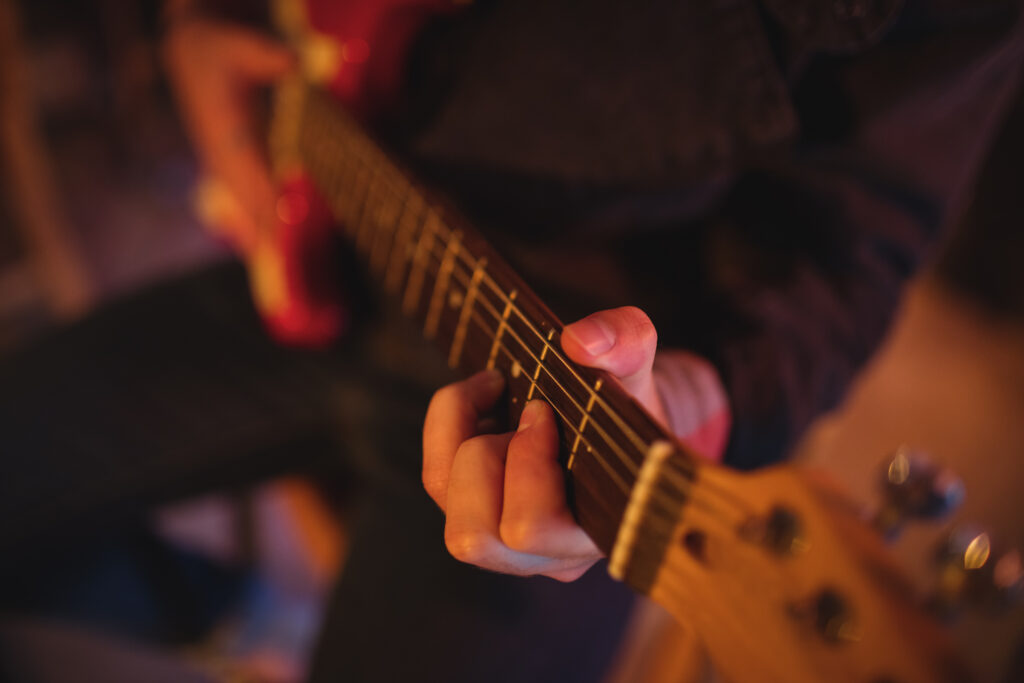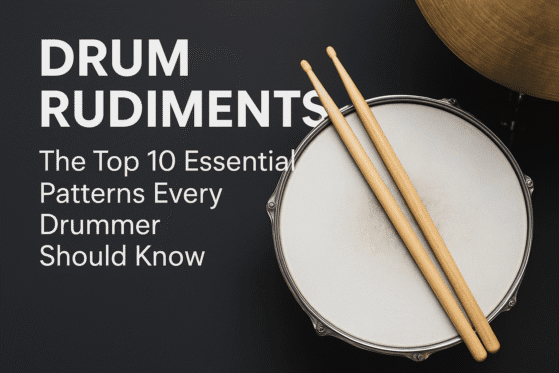How to Train Your Ear for Better Guitar Playing
Want to improve your guitar playing? Train Your Ear to recognize chords, melodies, and harmonies is a powerful way to boost your musical skills and confidence. By developing your ear, you can more easily identify chord progressions, melodies, and even the subtle nuances in a song. Start by practicing listening to and identifying different chord types, intervals, and melodies in the music you love. Try playing by ear or matching what you hear to the notes on your guitar. Over time, this ear training will help you become more intuitive with your playing, making it easier to learn new songs, improvise, and create music on the spot. With a trained ear, you’ll feel more confident and connected to the music you play.
1. Introduction: Why Ear Training Matters
Many guitarists struggle with:
✔ Learning songs by ear
✔ Playing in tune with others
✔ Recognizing chords and melodies
✔ Improvising freely
Ear training helps you hear music deeply, making it easier to play, compose, and improvise without relying on tabs or sheet music.
2. Understanding the Basics of Ear Training

It Includes:
✅ Recognizing pitches and notes
✅ Identifying intervals between notes
✅ Understanding chords and progressions
✅ Developing rhythmic accuracy
🎯 Goal: Train your ears to hear and reproduce music accurately.
3. Developing Pitch Recognition
Pitch recognition is the foundation of good ear training.
How to Improve Pitch Recognition:
🎵 Play a note on your guitar and sing it back.
🎵 Compare two notes: Are they the same or different?
🎵 Practice with a piano or tuning app to match notes.
✅ Exercise:
1. Play a note on your guitar.
2. Close your eyes and hum it.
3. Try to find the same note on a different string.
🔹 Why This Works: It improves your ability to identify and reproduce notes accurately.
4. How to Identify Intervals

Intervals are the distance between two notes, and training your ears to recognize them can make playing melodies by ear much easier. Some common intervals to start with include the Minor Second (think of the “Jaws” theme song), the Major Third (featured in “Happy Birthday”), and the Perfect Fifth (found in the “Star Wars” theme). A simple ear training exercise is to play two notes and try to name the interval between them. This practice helps you hear the relationship between notes rather than just Train Your Ear recognizing single tones, which is a crucial skill for understanding melodies and harmonies. Over time, this will improve your ability to play by ear, making your guitar playing more intuitive and expressive.
5. Recognizing Chords and Progressions
Chords form the foundation of music. The ability to recognize them makes it easier to learn songs and improvise.
How to Train for Chord Recognition:
🎵 Start with basic major and minor chords.
🎵 Listen to a chord and try to name its type.
🎵 Progress to more complex chords (sevenths, diminished, suspended).
🎯 Exercise:
1. Play a chord progression (e.g., C-G-Am-F).
2. Try to hum the root notes.
3. Identify each chord by ear.
🔹 Why This Works: Improves your ability to identify songs just by listening.
6. Melodic Dictation: Playing by Ear

Melodic dictation means listening to a melody and playing it without sheet music.
🎯 Exercise:
1. Listen to a simple melody.
2. Try to hum it first.
3. Find the notes on your guitar.
🔹 Why This Works: Trains you to replicate what you hear on your instrument.
7. Rhythm Training: Understanding Timing
Recognizing rhythms is just as important as hearing melodies.
🎵 How to Improve:
✅ Clap rhythms along with songs.
✅ Count beats while listening to music.
✅ Use a metronome to practice timing.
🎯 Exercise:
1. Listen to a song and tap out the rhythm.
2. Try to replicate it on your guitar.
🔹 Why This Works: Improves timing and rhythmic accuracy.
8. Using Singing to Improve Ear Training

Your voice is your best tool for ear training.
🎵 Try This:
✔ Sing intervals and scales before playing them.
✔ Hum melodies and try to find the notes on the guitar.
🔹 Why This Works: Strengthens your connection between hearing and playing.
9. The Role of Active Listening
Active listening means focusing deeply on the music rather than just hearing it passively. To practice active listening, start by listening to a song without any distractions, allowing yourself to fully immerse in the music. Focus on different elements, such as the bassline, melody, or chord structure, to better understand how they all fit together. Try humming or even playing along with the song to reinforce what you’re hearing. Train Your Ear This practice helps train your ears to pick up musical details more quickly, improving your ability to recognize patterns, rhythms, and harmonies in the music. Over time, active listening will enhance your musical ear and make your playing more expressive and intuitive.
10. How to Transcribe Songs by Ear

Transcribing means figuring out a song’s notes and chords by listening.
🎯 Steps to Transcribe a Song:
1. Choose a simple song to start.
2. Find the root notes and chords.
3. Play along and adjust your notes.
🔹 Why This Works: Develops a strong ear for music.
11. Ear Training Apps and Tools
There are many apps designed to improve ear training.
🎵 Recommended Apps:
✔ EarMaster – Comprehensive ear training.
✔ Functional Ear Trainer – Interval and chord recognition.
✔ Tenuto – Great for practicing notes and intervals.
🔹 Why This Works: Gives structured daily practice for faster progress.
12. How The Mystic Keys Can Help

At The Mystic Keys, we offer:
✔ One-on-one guitar lessons for better ear training
✔ Personalized exercises to improve listening skills
✔ Live feedback from professional instructors
✔ Techniques to master playing by ear
🎸 Join The Mystic Keys and develop your ear like a pro!
13. Conclusion: Take Your Guitar Skills to the Next Level
Ear training is essential for becoming a great guitarist.
✔ Practice pitch recognition, intervals, and chords
✔ Use singing and active listening to improve faster
✔ Train daily with apps and transcribing exercises
👉 Want to Train Your Ear faster?
🎸 Enroll in expert online guitar lessons at www.themystickeys.com today!
Related Blogs
Is electric guitar difficult? | Exploring Essential Techniques
Learning the electric guitar is a journey that captivates many aspiring musicians with its powerful sound, unique expression, and the promise of achieving a sense of musical independence.
Should I Learn Acoustic or Electric
Guitar?
Choosing between an acoustic guitar and an electric guitar can be a pivotal decision for aspiring musicians. Learn Acoustic Guitar or Electric Guitar? Each type of guitar has unique features, sounds, and playing styles that cater to different preferences and genres.
Can You Learn Electric Guitar in
3 Months?
Learning the electric guitar can be an exhilarating journey. The thrill of creating music, expressing yourself, and mastering new skills can be deeply rewarding. However, many aspiring guitarists wonder: Can you learn electric guitar in 3 months?








